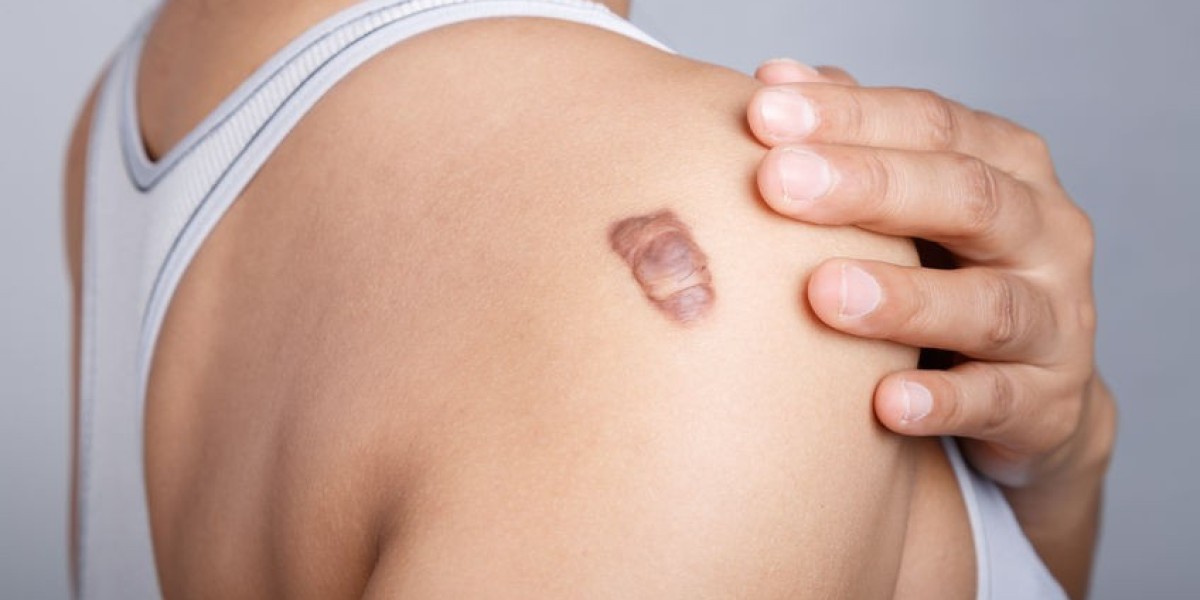Introduction:
Scars can have a significant impact on a person's physical appearance, self-esteem, and overall quality of life. Among the various types of scars, keloids pose a particularly challenging problem due to their aggressive growth and tendency to recur after treatment. However, recent advancements in keloid therapy have shown promising breakthroughs in scar reduction. This article explores some of the new frontiers in keloid treatment in abu dhabi, highlighting the cutting-edge techniques and approaches that offer hope for individuals seeking effective and long-lasting scar reduction.
1. Molecular Targeted Therapies:
Traditional keloid treatment methods such as corticosteroid injections and surgical excision often yield mixed results and carry the risk of recurrence. However, emerging research has shed light on the molecular pathways involved in keloid formation, opening up new avenues for targeted therapies. Researchers are investigating novel drugs that can inhibit or modulate key molecular signaling pathways involved in keloid pathogenesis, such as TGF-β, PDGF, and VEGF. By targeting these specific molecules, scientists aim to disrupt the abnormal wound healing process characteristic of keloids and promote more favorable scar formation.
2. Laser Therapy:
Laser technology has long been employed in various dermatological procedures, and its potential for scar reduction continues to evolve. Recent advancements in laser therapy, specifically fractional laser resurfacing, have shown promise in reducing keloid scars. Fractional laser treatment works by delivering concentrated beams of light to targeted areas of the skin, promoting collagen remodeling and reducing scar thickness. The controlled nature of the laser allows for precise and customized treatment, minimizing damage to surrounding healthy tissue. Although further research is needed to determine optimal parameters and treatment protocols, early results suggest that laser therapy can be an effective non-invasive option for keloid reduction.
3. Cryotherapy and Cold Therapy:
Cryotherapy, the use of extreme cold temperatures, has gained recognition as a potential keloid therapy. This technique involves applying liquid nitrogen or other cryogens to keloid scars, freezing the tissue and subsequently inducing controlled cell death. Cryotherapy helps reduce scar size, relieve associated symptoms such as itching and pain, and inhibit abnormal collagen production. Additionally, cold therapy devices, such as silicone gel sheets or dressings, have shown promise in managing keloid scars. These devices create a cool environment that helps regulate collagen synthesis and improve scar elasticity, ultimately reducing keloid formation and minimizing scar appearance.
4. Gene Therapy:
Gene therapy is an exciting field with the potential to revolutionize scar reduction. Researchers are exploring gene editing techniques, such as CRISPR-Cas9, to target and modify genes involved in keloid formation. By precisely editing the DNA within keloid cells, scientists aim to disrupt the abnormal signaling cascades responsible for keloid pathogenesis. While gene therapy for keloids is still in its early stages of development, it holds tremendous promise for providing long-lasting and curative solutions for individuals struggling with keloid scars.
5. Combination Therapies:
Recognizing the complex nature of keloid formation, clinicians and researchers are increasingly exploring combination therapies. These approaches involve the simultaneous or sequential use of different treatment modalities to target multiple aspects of keloid pathogenesis. For example, combining surgical excision with postoperative radiation therapy has shown improved outcomes compared to either treatment alone. Other combination strategies include the use of corticosteroid injections alongside laser therapy or cryotherapy. These synergistic approaches aim to enhance treatment efficacy, reduce recurrence rates, and optimize patient outcomes.
Conclusion:
The management of keloid scars has historically presented significant challenges due to their aggressive growth and high recurrence rates. However, the advancements in keloid therapy discussed in this article provide renewed hope for individuals seeking effective scar reduction. Molecular targeted therapies, laser therapy
, cryotherapy, gene therapy, and combination approaches represent new frontiers in keloid treatment, offering promising breakthroughs in scar reduction. While further research and clinical trials are necessary to refine these techniques, they hold the potential to transform the lives of individuals affected by keloid scars and pave the way for more effective and personalized scar management strategies.



